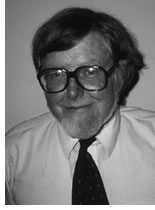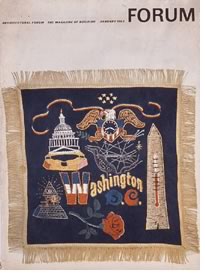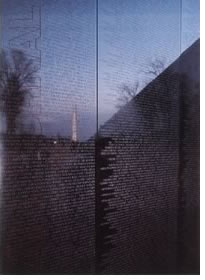

12/2005

 Donald J. Canty, Hon. AIA—architecture
critic, editor, and mentor for half a century—died December 14
in Seattle. He was 76 years old.
Donald J. Canty, Hon. AIA—architecture
critic, editor, and mentor for half a century—died December 14
in Seattle. He was 76 years old.
In the early part of his career, Canty was editor of Western Architect and Engineer. In 1963, when that magazine was merged with Architectural Record, he came to the AIA in Washington, D.C., to serve as communications coordinator for a short while before accepting the managing editor position at Architectural Forum in New York City. He returned to Washington, D.C., in 1967 to create City magazine for Urban America Inc., which later became the publication of the National Urban Coalition. Although not an architect, he was an ardent believer in the absolute importance of a cohesive urban fabric. With a BA in philosophy at Santa Clara University in his native California and MA in journalism from Northwestern University, his insight into architecture came from his humanistic perspective.
“Don was shaped by that aspect of Modernism that insisted on the social purpose of design,” says AIA Executive Vice President/CEO Norman L. Koonce, FAIA. “There was little room in his philosophy of art for art’s sake. Architecture and art were for humanity’s sake, and Don was not shy about evaluating the works covered in the Journal from this perspective. His gift as an editor in attracting talent, his articulateness as a writer and as a thinker, and his insistence on complete editorial independence won awards for the magazine and ever-increasing honors for him and the AIA. He will be as missed as much as his legacy is cherished.”
 AIA Journal becomes a critical force
AIA Journal becomes a critical force
Canty replaced Robert E. Koehler, Hon. AIA, at the helm of the AIA
Journal, beginning with the March 1974 issue. Not one to mince words, his first
sentence in that issue was: “What the hell do architects know
or care about national growth policy?” That first blast was actually
quoting an architect “who felt that his profession should stick
closer to its last of building design,” he wrote in the first
of many articles on the inside-out nature of architecture and its context.
“As the new editor, Don immediately started enlarging the scope of AIA Journal articles,” recalls former Architecture Managing Editor Allen Freeman. “But he did so in steps that wouldn’t alienate most members of the Institute.” When he launched the series of post-occupancy evaluations in the late 1970s, which featured comments by users and clients, the first building he selected (very carefully, Freeman reiterates) was the beloved and innovative John Deere headquarters in Moline, Ill., by the late Eero Saarinen. From there, evaluations moved to interesting buildings with flaws. The best were written with a tone of earnest investigation for the benefit of the profession, Freeman says, “and Don pretty much stayed out of trouble.”
But trouble did occasionally surface, as with a piece in the early 1980s about Lever House winning the AIA Twenty-five Year Award. The article was based on an interview with Lever House architect Gordon Bunshaft and included somewhat unflattering, albeit accurate quotations about Bunshaft’s client, Charles Luckman, the architecturally trained president of Lever Brothers. “Luckman raised holy hell about the AIA Journal article and either withdrew or threatened to withdraw as a corporate member,” Freeman says. “Fortunately, the noise quieted down and the magazine soldiered on.”
 Canty developed the magazine into a leading force in international architectural
criticism over his 25-year tenure. Its name changed to Architecture in
the mid-1980s and the AIA subsequently sold it to Billboard Publishing
toward the end of that decade.
Canty developed the magazine into a leading force in international architectural
criticism over his 25-year tenure. Its name changed to Architecture in
the mid-1980s and the AIA subsequently sold it to Billboard Publishing
toward the end of that decade.
Canty retired to Seattle in 1989, remaining active, nonetheless, writing architecture criticism for the Post-Intelligencer and creating Concordia magazine for the University of Washington.
A mentor
"He was the editor who took my first national story,” writes
Architectural Record Editor in Chief Robert Ivy, FAIA, “then developed
me, quickly, into a national writer. I was a contributing editor for Architecture for almost 15 years. [He was] quite a guy [and I] wouldn't be here without
him."
“Don was really good at paying attention to the things about design and architecture that architects often overlook or don’t put enough emphasis on: how a building operates in a city and what kinds of connections it has,” adds Faith & Form Editor Michael J. Crosbie, PhD, whom Canty hired straight out of school. “We, as architects, tend too often to see buildings as isolated objects. But Don was very conscious of how something works within the fabric of a place. That was an important lesson I learned from him, and I try to include a part of that in everything I write.”
Among the many other writers and editors Canty took in and developed are Andrea Dean (whose memoriam of the man will appear in the upcoming Architectural Record) and Stanley Abercrombie, FAIA, who was Canty’s senior editor for architecture in the 1980s.
 “Don Canty knew architecture and appreciated what it can do for
those who see and use it,” Abercrombie remembers. “But his
feeling for architecture was in a context of feeling for the whole world—both
what it could be, with the pleasures of good food and family, and what
it should be, with those pleasures available equally to everyone. He
was a wonderfully caring man.”
“Don Canty knew architecture and appreciated what it can do for
those who see and use it,” Abercrombie remembers. “But his
feeling for architecture was in a context of feeling for the whole world—both
what it could be, with the pleasures of good food and family, and what
it should be, with those pleasures available equally to everyone. He
was a wonderfully caring man.”
“It was very remarkable to step into that job and have him so believe in me and trust in me,” recalls Carole Palmer, AIA Journal/Architecture art director throughout the 1980s. “What I valued in Don more than anything were his principles. If anybody was trying to get into the magazine for monetary gains, he was a terror. It was more than being principled, he lived it.”
Few words but powerful
Make every statement simple but not simplistic was one of Canty’s
guiding principles, as exemplified by some of his maxims:
- “Don’t worry, I have everything from a scalpel to a machete in my editing toolbox,” he would say to junior editors reluctant to turn in copy.
- If he disagreed vehemently, he could take control of an argument with a single word: “Oh?”
- “To get your work published,” he’d tell architects who often asked, “do good work, and let us know about it.”
- What is good work? If a piece of architecture can compel you to pull over at the side of the road to take a further look, he would say, that is a sign of good architecture.
- And his way of criticizing a bad building: “I don’t publish it.”
Toward the beginning and again at the end of his career, Canty also authored several books, among which are the 1966 “Architecture Merit Badge” section of the Boy Scout Manual, One Year Later (in response to the Kerner Commission Report on urban violence) and A Single Society: Alternatives to Urban Apartheid in 1969, American Architecture of the 1980s in 1990, and Lasting Aalto Masterwork: The Library at Mount Angel Abbey in 1992.
Canty was an avid jazz enthusiast and pianist as well and passed on his multi-talents as writer, musician, and executive to his seven children, all surviving, among whom are a nationally renowned novelist and two professional musicians. He is also survived by Joan, his wife of 53 years.
Copyright 2005 The American Institute of Architects.
All rights reserved. Home Page ![]()
![]()
![]()